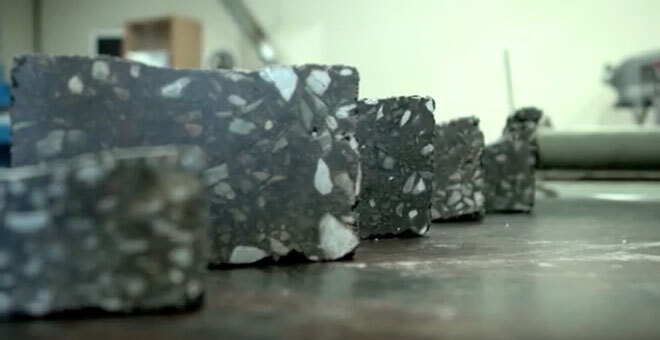The Winding Road to Sustainable Pavements

Purchased on Istockphoto.com. Copyright.
If Éric Lachance-Tremblay had not been an engineer, he might have become a lawyer. But fate decided otherwise, and that’s just as well.
From a Concrete Canoe to Asphalt Pavement
While studying for his bachelor’s degree in Construction Engineering at ÉTS, Éric became very involved in the Canoë de béton student club. This is when he met Professor Daniel Perraton who recruited him as a research assistant for a project related to concrete. After this exciting project, Éric did an internship where he discovered the wide universe of bituminous materials. “After earning my bachelor’s degree, I decided to do a master’s in the field of asphalt mixes. It’s a fascinating material with a very complex behaviour to analyze.”
A Green Road Made of Glass
In 2014, Éric earned his master’s degree in Construction Engineering at ÉTS, followed by a PhD in 2018. Both his thesis and dissertation were on the same topic: the use of recycled glass in asphalt mixes. Recycling glass has been an issue for a long time. So why not give it a second life by integrating it into asphalt mixes?
Yet, Eric and his team are finding that asphalt is less durable if it contains glass. At the same time, bottle deposits are back on the agenda and will soon be regulated. As a result, the horizon for recycling glass in asphalt is narrowing rapidly.
Every Cloud Has a Silver Lining

Éric Lachance-Tremblay, Professor at ÉTS
Although Eric’s research did not produce the results he hoped for, it did allow him to develop a more accurate way of evaluating the sensitivity of a material to the effects of freezing and thawing. This parameter can now be used in the study of pavement materials.
After earning his PhD, Éric felt the need for a change. He accepted a position with a consulting firm specializing in asphalt, concrete and raw materials. His mandate was to examine the causes of civil engineering failures and to trace the chain of events. He worked with engineers, clients, scientists and lawyers.
Bringing Field Experience to the Classroom
Although teaching had been a part of Eric’s life since 2010—first as a lecturer, then as a research assistant and lecturer at ÉTS—his almost four-year interlude in industry allowed him to substantially enrich his engineering background in the field. But he missed research and teaching.
“I kept an eye on job postings at ÉTS.” Eventually, his wish came true. He was selected to become a professor in Construction Engineering. “I’m the type of person who is 100 percent involved with the students, a bit like a supervisor with his junior engineers.” Eric enjoys working in synergy on research projects.
Quebec’s road network includes approximately 325,000 kilometres of roads in different conditions. So there is no shortage of projects!
Innovate or Survive: No Contest
Éric Lachance-Tremblay is adamant: the pavement and asphalt materials industry is served by excellent companies that have invested heavily in developing cutting-edge materials and processes. The knowledge is there, but the large governmental machine tends to limit innovation initiatives.

“How do you expect a contractor to innovate when in order to get contracts, they have to be the lowest bidder? It’s nonsense.”
This dilemma stems from societal choices. And the thought process has only just begun.
Rehabilitation Techniques to Make Things Last!
Éric Lachance-Tremblay is pursuing his research on road rehabilitation. This approach aims to reuse all the existing materials, thereby reducing the ecological footprint. “By injecting a few new materials, we can build a new road over the existing one.”
The process strengthens the pavement structure by stabilizing the sub base. Although rehabilitation is a bit more expensive, life cycle analyses show that pavement durability could increase significantly, according to Lachance-Tremblay.
The Shift to Sustainable Roads
The industry is set to change. The technology for designing green roads exists. Éric Lachance-Tremblay and the team of professors at ÉTS are “paving” the way. Hopefully, promising initiatives coming from the new generation will be well received.


